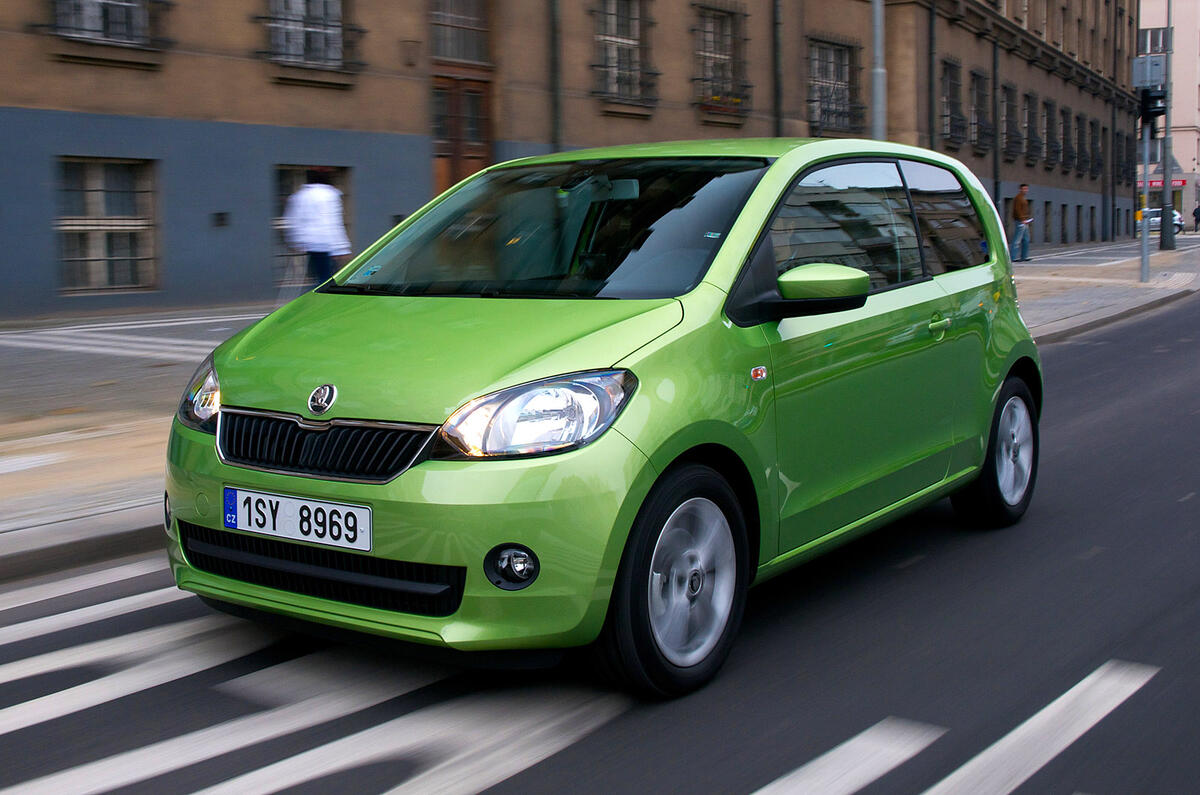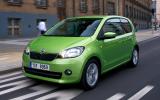What is it?
If the supermini market wasn’t crowded enough already, the Volkswagen Group has served up three new offerings, with this new Skoda Citigo going ‘up’ against the VW Up and forthcoming Seat Mii in their respective dealer showrooms.
All three cars share the same design underpinnings, and even the exterior styling differences between them aren’t particularly dramatic. They can’t be, because the Citigo, Up and Mii have exactly the same dimensions at 3560mm long, 1650mm wide and 1480mm high, with a 2420mm wheelbase.
So, setting aside the badge differences, how do you distinguish a Citigo from an Up? There are some minor styling tweaks – notably to the front-end treatment, the shape of the front headlamps and the rear side-window.
The Citigo’s finned grille set in a chrome-plated frame is a scaled-down version of that seen on the MissionL concept car at the recent Frankfurt motor show, and shows the stylistic way forward for the Czech marque’s ever-expanding range.
Engine-wise, there will be two petrol offerings at launch, one with 59bhp and the other with 74bhp. Both produce 70lb ft of torque from the normally aspirated, all-alloy, 12-valve, unit and come with a five-speed manual gearbox, although an automated sequential gearbox (ASG) will also be available.
Safety equipment includes a head-thorax side airbag – a first in any Skoda, let alone the smallest one – and the ‘City Safe Drive’ brake assist system. At speeds up to 19mph, CSD uses a laser sensor to automatically slow the car if it senses there is a danger of a collision.
The three-door Citigo we tested will launch next June, with the five-door version following about two months later.
What’s it like?
The Citigo is brilliant fun to drive, well engineered and ticks all of the ‘car about town’ boxes that it should.
In 74bhp form, the three-pot, 999cc engine is remarkably refined and as well as its urban prowess, feels capable of handling motorway cruises without any fuss.
The light-but-precise steering reinforces the sensation that this is an agile car that is in its element when nipping in and out of traffic. The ride was on the firm side on some country roads around Prague, and that’s something that will probably hold true on the UK’s largely uneven asphalt too.
Autocar also drove the less-powerful 59bhp Citigo. In that car, the powerplant sounds harsher and doesn’t cruise along with the same willingness as the 74bhp version. Still, both cars have decent fuel economy, with the 60bhp car returning 62.8mpg and 105g/km of carbon dioxide emissions and the 74bhp version offering 60.1mpg and 108g/km Co2.
Although the styling differences between the Citigo and Up are relatively minor, to our eyes the conventional front-end treatment of the Skoda is more attractive than the more adventurous nose of the VW.
In terms of layout, the cabin is sensibly thought-out, with all the key controls in logical positions and easy-to-use switchgear.
Taking centre-stage on the dashboard is a removable 5-inch multi-media device that can be use for navigation, as a hands-free phone and on-board computer and is integrated into the car’s audio system.























Join the debate
Add your comment
Re: Skoda Citigo
Re: Skoda Citigo
I agree, but you missed out Kia, either thwe Picanto (much cheaper) or the latest Rio which both have a 7 year warranty. Time for that group test............
Re: Skoda Citigo
Bluemotion technology is not available exclusively to diesel engines. Petrol variants of Eos, Passat, Tiguan and Sharan are available with Bluemotion Technology, the Move Up! 1.0 60ps is available with Bluemotion tech and is under 100g/km co2. Volkswagen are not planning a diesel because of the requirement to fit Diesel Particulate Filters and the expected primary use of these cars.